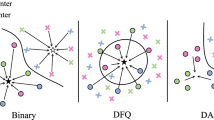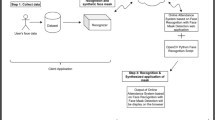Abstract
Face recognition for a single sample per person (SSPP) is a challenging task due to the lack of sufficient sample information. In this paper, in order to raise the performance of face recognition for SSPP, we propose an algorithm of cropped and extended patch collaborative representation for a single sample per person (CEPCRC). Considering the fact that patch-based method can availably avoid the effect of variations, and the fact that intra-class variations learned from a generic training set can sparsely represent the possible facial variations, thus, we extend patch collaborative representation based classification into the SSPP scenarios by using the intra-class variant dictionary and learn patch weight by exploiting regularized margin distribution optimization. For more complementary information, we construct multiple training samples by the means of cropping. Experimental results in the CMU PIE, Extended Yale B, AR, and LFW datasets demonstrate that CEPCRC performs better compared to the related algorithms.





Similar content being viewed by others
REFERENCES
Zhang, J., Yan, Y., and Lades, M., Face recognition: Eigenface, elastic matching, and neural nets, Proc. IEEE, 1997, vol. 85, no. 9, pp. 1423–1435.
Murthy, K.R. and Ghosh, A., Norm discriminant eigenspace transform for pattern classification, IEEE Trans. Cybern., 2019, vol. 49, no. 1, pp. 273–286.
Belhumeur, P.N., Hespanha, J.P., and Kriegman, D.J., Eigenfaces vs. Fisherfaces: Recognition using class specific linear projection, IEEE Trans. Pattern Anal. Mach. Intell., 2002, vol. 19, no. 7, pp. 711–720.
Ye, H., Li, Y., Chen, C., et al., Fast fisher discriminant analysis with randomized algorithms, Pattern Recognit., 2017, vol. 72, pp. 82–92.
Wright, J., Ganesh, A., Zhou, Z., et al., Demo: Robust face recognition via sparse representation, IEEE International Conference on Automatic Face and Gesture Recognition, 2009, vol. 31, no. 2, pp. 210–227.
Su, Y., Liu, Z., and Wang, M., Sparse representation based face recognition against expression and illumination, IET Image Processing, 2018, vol. 12, no. 5, pp. 826–832.
He, K., Zhang, X., Ren, S., et al., Deep residual learning for image recognition, IEEE Conference on Computer Vision and Pattern Recognition, 2016, pp. 770–778.
Simonyan, K. and Zisserman, A., Very deep convolutional networks for large-scale image recognition, arXiv:1409.1556 [cs.CV], 2014.
Krizhevsky, A., Sutskever, I., and Hinton, G.E., ImageNet classification with deep convolutional neural networks, International Conference on Neural Information Processing Systems, 2012, pp. 1097–1105.
Srivastava, R.K., Greff, K., and Schmidhuber, J., Training very deep networks, arXiv:1507.06228 [cs.LG], 2015.
Mohammadzade, H. and Hatzinakos, D., Projection into expression subspaces for face recognition from single sample per person, IEEE Trans. Affective Comput., 2013, vol. 4, no. 1, pp. 69–82.
Pan, J., Wang, X.S., and Cheng, Y.H., Single-sample face recognition based on LPP feature transfer, IEEE Access, 2016, vol. 4, pp. 2873–2884.
Shan, S., Cao, B., Gao, W., et al., Extended Fisherface for face recognition from a single example image per person, IEEE International Symposium on Circuits and Systems, 2008, vol. 2.
Yan, H., Lu, J., Zhou, X., et al., Multi-feature multi-manifold learning for single-sample face recognition, Neurocomputing, 2014, vol. 143, no. 16, pp. 134–143.
Li, W. and Liang, J., Adaptive face representation via class-specific and intra-class variation dictionaries for recognition, Multimedia Tools Appl., 2017, no. 11, pp. 1–20.
Su, Y., Shan, S., Chen, X., et al., Adaptive generic learning for face recognition from a single sample per person, 2010 IEEE Computer Society Conference on Computer Vision and Pattern Recognition, 2010.
Deng, W., Hu, J., and Guo, J., Extended SRC: Undersampled face recognition via intraclass variant dictionary, IEEE Trans. Pattern Anal. Mach. Intell., 2012, vol. 34, no. 9, pp. 1864–1870.
Wei, C.P. and Wang, Y.C.F., Undersampled face recognition with one-pass dictionary learning, IEEE International Conference on Multimedia and Expo, 2015, pp. 1–6.
Yu, Y.F., Dai, D.Q., Ren, C.X., et al., Discriminative multi-scale sparse coding for single-sample face recognition with occlusion, Pattern Recognit., 2017, vol. 66, pp. 302–312.
Zhu, P., Yang, M., Zhang, L., et al., Local generic representation for face recognition with single sample per person, Lect. Notes Comput. Sci., 2014, vol. 9005.
Khadhraoui, T., Borgi, M.A., Benzarti, F., et al., Local generic representation for patch uLBP-based face recognition with single training sample per subject, Multimedia Tools Appl., 2018, no. 12, pp. 1–20.
Zhang Lei, Meng Yang, and Xiangchu Feng, Sparse representation or collaborative representation: Which helps face recognition?, 2011 IEEE International Conference on Computer Vision, 2011.
Yang, M., Wang, X., Zeng, G., et al., Joint and collaborative representation with local adaptive convolution feature for face recognition with single sample per person, Pattern Recognit., 2016, vol. 66, pp. 117–128.
Lu, J., Tan, Y.P., and Wang, G., Discriminative multi-manifold analysis for face recognition from a single training sample per person, IEEE Trans. Pattern Anal. Mach. Intell., 2012, vol. 35, no. 1, pp. 39–51.
Gao, S., Jia, K., Zhuang, L., et al., Neither global nor local: Regularized patch-based representation for single sample per person face recognition, Int. J. Comput. Vision, 2015, vol. 111, no. 3, pp. 365–383.
Lu, J., Tan, Y.P., and Wang, G., Discriminative multimanifold analysis for face recognition from a single training sample per person, IEEE Trans. Pattern Anal. Mach. Intell., 2012, vol. 35, no. 1, pp. 39–51.
Gu, J., Liu, L., and Hu, H., Patch-based sparse dictionary representation for face recognition with single sample per person, Lect. Notes Comput. Sci., 2015, vol. 9428, pp. 120–126.
Zhu, P., Zhang, L., Hu, Q., et al., Multi-scale patch based collaborative representation for face recognition with margin distribution optimization, European Conference on Computer Vision, 2012, pp. 822–835.
Rosset, S., Zhu, J., and Hastie, T., Boosting as a regularized path to a maximum margin classifier, J. Mach. Learn. Res., 2004, vol. 5, no. 4, pp. 941–973.
Shawe-Taylor, J. and Cristianini, N., Robust Bounds on Generalization from the Margin Distribution, 1998.
Reyzin, L. and Schapire, R.E., How boosting the margin can also boost classifier complexity, ICML '06 Proceedings of the 23rd International Conference on Machine Learning, 2006, pp. 753–760.
Shen, C. and Li, H., Boosting through optimization of margin distributions, IEEE Trans. Neural Networks, 2010, vol. 21, no. 4, pp. 659–666.
Shen, C. and Li, H., On the dual formulation of boosting algorithms, arXiv:0901.3590 [cs.LG], 2009.
Sun, Y., Wang, X., and Tang, X., Deep learning face representation from predicting 10,000 classes, IEEE Conference on Computer Vision and Pattern Recognition, 2014, pp. 1891–1898.
Liu, F., Tang, J., Song, Y., et al., Local structure based multi-phase collaborative representation for face recognition with single sample per person, Inf. Sci., 2016, vols. 346–347, pp. 198–215.
Gross, R., Matthews, I., Cohn, J., et al., Multi-PIE, Image Vision Comput., 2010, vol. 28, no. 5, pp. 807–813.
Georghiades, A.S., Belhumeur, P.N., and Kriegman, D.J., From few to many: Illumination cone models for face recognition under variable lighting and pose, IEEE Trans. Pattern Anal. Mach. Intell., 2002, no. 6, vol. 23, no. 6, pp. 643–660.
Martinez, A.M., The AR Face Database, CVC Technical Report, 1998.
Huang, G.B., Mattar, M., Berg, T., et al., Labeled Faces in the Wild: A Database for Studying Face Recognition in Unconstrained Environments, Amherst: University of Massachusetts, 2007.
Lin, G., Xie, M., and Mao, L., Extended CRC: Face recognition with a single training image per person via intraclass variant dictionary, IEICE Trans. Inf. Syst., 2013, vol. 96, no. 10, pp. 2290–2293.
Yang, M., Zhang, L., Yang, J., et al., Robust sparse coding for face recognition, IEEE Computer Vision and Pattern Recognition, 2011, pp. 625–632.
Funding
This work was supported by Hunan Natural Science Foundation, grant no. 2018JJ3486.
Author information
Authors and Affiliations
Corresponding author
Ethics declarations
The authors declare that they have no conflicts of interest.
About this article
Cite this article
Huixian Yang, Gan, W., Chen, F. et al. Cropped and Extended Patch Collaborative Representation Face Recognition for a Single Sample Per Person. Aut. Control Comp. Sci. 53, 550–559 (2019). https://doi.org/10.3103/S0146411619060099
Received:
Revised:
Accepted:
Published:
Issue Date:
DOI: https://doi.org/10.3103/S0146411619060099




